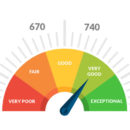The Thriving Secondhand and Resale Market: Embracing Sustainability and Affordability

In recent years, the secondhand and resale market has experienced a remarkable resurgence, gaining popularity among consumers for its sustainability, affordability, and unique finds. What was once considered a niche or budget-friendly alternative to traditional retail has now evolved into a thriving sector, reshaping how people shop and perceive pre-owned goods. From vintage clothing boutiques to online platforms dedicated to resale, the landscape of secondhand shopping is transforming, driven by changing consumer choices and growing environmental consciousness.
The Appeal of Secondhand Shopping
One of the primary driving forces behind the surge in secondhand shopping is the growing awareness of environmental sustainability. As problems of climate change and resource depletion are escalating, consumers seek ways to reduce their ecological footprint. Secondhand shopping offers a sustainable solution by extending the lifespan of products and minimizing the demand for new goods, thereby reducing the environmental impact associated with manufacturing and disposal.
Additionally, secondhand shopping appeals to consumers for its affordability. In a world where fast fashion dominates, many people reevaluate their spending habits and opt for more budget-conscious options. Secondhand goods are often priced at a fraction of their original retail value, allowing shoppers to stretch their dollars further without compromising quality or style. This affordability factor particularly appeals to younger generations facing economic challenges such as student loan debt and rising living costs.
The Evolution of the Resale Market
The resale market has evolved significantly, driven by technological advancements and changing consumer behaviours. Online platforms such as thredUP, Poshmark, and Depop have revolutionized the way people buy and sell secondhand goods, providing a convenient and accessible marketplace for both sellers and buyers. These platforms offer various pre-owned items, ranging from clothing and accessories to furniture and electronics, catering to diverse tastes and preferences.
Moreover, the resale market has become a hotbed for creativity and self-expression. Vintage and thrift clothing, in particular, have gained cult followings, with fashion enthusiasts scouring thrift stores and online marketplaces in search of unique and one-of-a-kind pieces. The resurgence of vintage fashion trends has fueled this demand, driving up the appeal of secondhand shopping among style-conscious consumers.
Embracing a Circular Economy
The rise of the secondhand and resale market indicates a broader shift towards a circular economy, where resources are reused, recycled, and repurposed to minimize waste and maximize value. By embracing secondhand shopping, consumers contribute to this circular economy by adding new life to existing items.
Furthermore, the secondhand market presents opportunities for sustainable entrepreneurship and small-scale businesses. Thrift stores, consignment shops, and online resellers play vital roles in facilitating the exchange of pre-owned goods while also creating jobs and supporting local economies. Additionally, initiatives such as clothing swaps and rental services offer alternative consumption models, promoting a more conscious and mindful approach to shopping.
Conclusion
In conclusion, the secondhand and resale market represents a significant paradigm shift in consumer behaviour, driven by a desire for sustainability, affordability, and individuality. As awareness of the environment grows, so does the appeal of secondhand shopping as a viable and ethical alternative to traditional retail. By embracing the circular economy principles and supporting the resale market, consumers can proactively reduce waste and create a more sustainable future for future generations.










